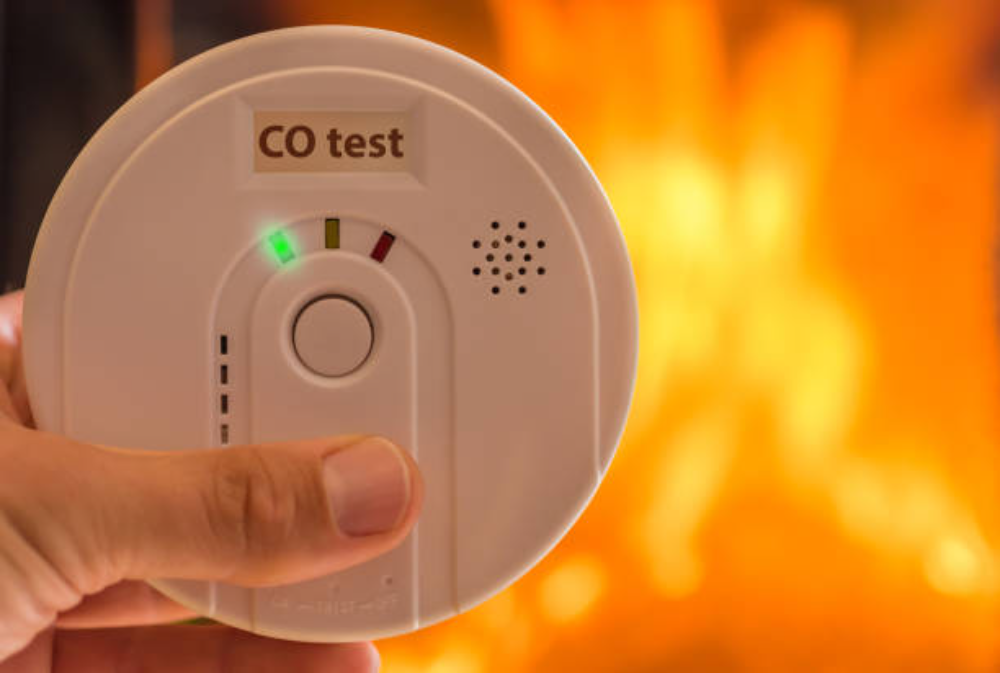Carbon monoxide (CO) poisoning at work is not just a hazard—it's a potentially deadly threat that employers and employees must confront head-on. Without proper management and awareness, this silent, odorless gas can lead to catastrophic health outcomes.
Rodich Law, a leading advocate for workers' rights and workplace safety, stresses the critical importance of recognizing and mitigating this danger and is here to guide you in ensuring a safe working environment for all.
Carbon monoxide poisoning occurs when CO is inhaled and enters the bloodstream, binding to hemoglobin in the red blood cells and reducing their ability to carry oxygen. It’s often found in industrial settings, garages, and other environments where fuel combustion takes place.
In many workplaces, CO exposure can occur without warning. Here are some common sources:
As carbon monoxide poisoning progresses, symptoms may appear gradually and be misidentified as other health problems.
The initial indicators can be subtle at first and may include:
Early intervention on these warning signs can prevent more severe consequences.
Prolonged exposure to carbon monoxide can result in long-term health issues, such as:
Understanding these risks underscores the importance of taking precautions to avoid carbon monoxide exposure.
If you suspect you've been exposed to carbon monoxide, taking quick and effective action is crucial for your health and safety. Here’s what you should do to minimize potential harm and address the situation properly:
Acting swiftly not only protects your health but also helps prevent similar incidents in the future.

Under occupational health and safety regulations, employers have a legal obligation to ensure a safe working environment. To meet these responsibilities, employers should focus on the following areas:
Employers must conduct regular risk assessments to identify potential sources of carbon monoxide and evaluate the risk of exposure. This involves:
Identifying Sources - Determine where carbon monoxide is most likely to be present in the workplace.
Evaluating Risk - Assess the level of exposure and the potential impact on employees' health.
Once the risks are identified, employers must implement appropriate control measures to minimize exposure. Among these are:
Ventilation - Ensure proper ventilation in areas where carbon monoxide is likely to accumulate. This can involve installing exhaust systems or ensuring adequate airflow.
Maintenance - Regularly maintain and inspect equipment that may produce carbon monoxide, such as heaters and engines.
Monitoring - Install carbon monoxide detectors in areas where exposure is a risk. These devices can alert employees to dangerous levels of CO before they become hazardous.
Employees must be trained on the risks associated with carbon monoxide exposure at work and how to recognize the symptoms of poisoning. Key topics to be covered are:
Recognizing Symptoms - Employees should be aware of the early signs of carbon monoxide poisoning and understand the importance of reporting symptoms promptly.
Emergency Procedures - Employees need to know the appropriate actions to take in the event of a CO leak, such as evacuating the area and seeking medical help.
Commitment to these safety practices not only fulfills legal obligations but also guarantees the well-being of employees and promotes a healthier work environment.
Workers who suffer from carbon monoxide poisoning at work have legal rights under state and federal laws. Rodich Law specializes in handling such cases and can offer vital assistance. Here’s an overview of the legal avenues available:
Typically, employees exposed to carbon monoxide at work are entitled to workers' compensation benefits. These benefits generally cover medical expenses, rehabilitation costs, and lost wages during the recovery period.
In some cases, liability may fall on a third party, such as an equipment manufacturer or external service provider. If a faulty product or inadequate maintenance led to the exposure, pursuing a third-party claim may be an option alongside workers' compensation.
Should carbon monoxide exposure result in a worker's death, the surviving family members can file a wrongful death claim. This legal action can help secure compensation for funeral expenses, loss of income, and emotional suffering.
With professional legal guidance, you can effectively address carbon monoxide exposure claims and achieve a fair resolution for your situation.

When workplace accidents and safety violations occur, Rodich Law stands ready to fight for your rights and ensure that justice is served. Our firm excels in handling work-related injury cases with a keen focus on preventing future incidents and promoting safer work environments.
With a deep understanding of California’s regulations and a commitment to safeguarding your health and safety, we tackle every case with precision and care, from investigating safety breaches to negotiating for appropriate compensation.
So, don’t wait for issues to escalate—contact Rodich Law today to discuss how our expert legal strategies can lead to the best outcomes for you.
Carbon monoxide poisoning at work is a serious issue that can have life-altering consequences. By staying informed and prepared, you can contribute to a healthier and safer workplace for everyone. Remember, safety comes first, and knowledge is key to prevention.
For those who’ve been affected by carbon monoxide exposure at work, don't hesitate to reach out to Rodich Law for a free case evaluation.
Workers can report carbon monoxide hazards to regulatory agencies like OSHA if their employer doesn't address the issue. Consulting with a workplace safety attorney can also help ensure that their concerns are properly addressed and legal actions are taken if necessary.
Effective carbon monoxide detectors for workplaces combine CO sensing with alarms and display features. They should be installed in high-risk areas near fuel-burning equipment and meet industry standards for accuracy and reliability.
Carbon monoxide detectors need to be serviced or replaced every 5 to 7 years according to the manufacturer’s guidelines. Routine maintenance helps ensure that detectors function correctly and provide accurate warnings of hazardous CO levels.
Misconceptions include thinking a single detector is enough for large areas or that detectors are only needed in enclosed spaces. In reality, multiple detectors are often required for larger areas, and they should be placed near potential CO sources.
Personal protective equipment (PPE), such as respirators with CO filters, offers extra protection against carbon monoxide poisoning. It should be used alongside proper ventilation and regular maintenance to manage CO risks effectively.
"*" indicates required fields